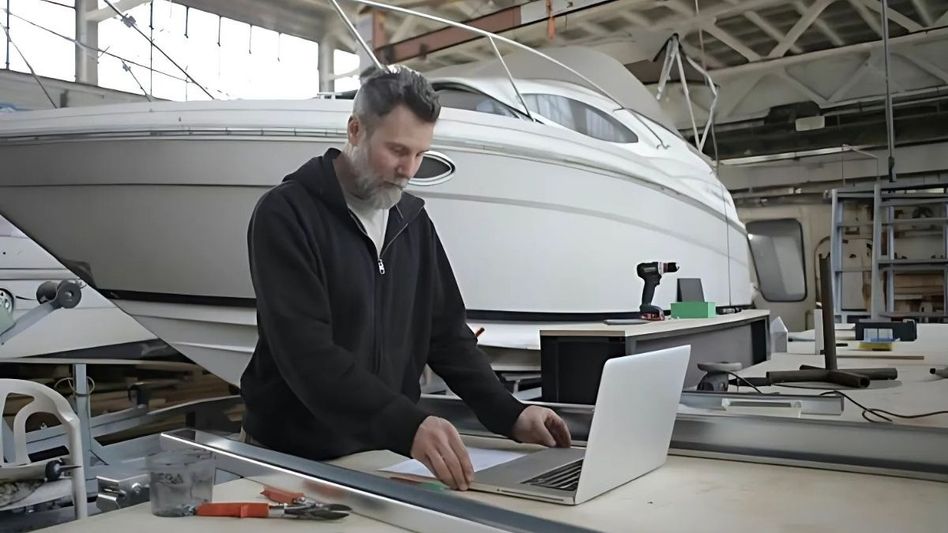Thierry Birles: Removing Wasteful Idle Time and Helping Science Through Yachts
Press Release |During a meeting in late 2023, a marine biologist described her two-year struggle to secure funding for just three days of ocean research. Thierry Birles immediately picked up on this, his mind racing for a solution from his experience and knowledge of navigating both the luxury yacht circuit and the complex world of maritime business consulting.

During a meeting in late 2023, a marine biologist described her two-year struggle to secure funding for just three days of ocean research. Thierry Birles immediately picked up on this, his mind racing for a solution from his experience and knowledge of navigating both the luxury yacht circuit and the complex world of maritime business consulting. Birles found himself calculating the mathematics: dozens of his clients owned vessels that sat idle for 49 weeks annually, burning through maintenance costs while contributing nothing to scientific knowledge.
That moment sparked what would become Birles’ most ambitious venture yet, connecting underutilized luxury yachts with researchers desperate for sea time, all while pioneering predictive maintenance systems that could transform how the maritime industry thinks about vessel management.
Thierry Birles had already established himself as a formidable presence in yachting circles, with sis background as a retired maritime legal advisor to top-50 shipping companies providing him with unique insights into regulatory frameworks across multiple jurisdictions. Yet it was his ability to see patterns where others saw only problems that would define his latest chapter.
The Science of Idle Assets
By early 2024, Birles had begun systematically mapping the intersection between scientific need and yacht availability. His network of connections across the Mediterranean regatta circuit, from St. Tropez to Monaco, revealed a startling reality: luxury vessels worth millions sat dormant while critical marine research went unfunded. The solution required more than simple matchmaking; it demanded a complete rethinking of how these sophisticated machines could serve dual purposes.
Working from his bases in the Bahamas and Belgium, Birles developed partnerships that would facilitate over 45 research expeditions in the first half of 2025 alone. These ranged from tracking white sharks in Mediterranean waters to studying black coral reefs in Indonesian archipelagos. The vessels involved spanned from 24-meter sailing yachts to 65-meter motor yachts, each equipped with increasingly sophisticated monitoring systems that could serve both luxury and scientific purposes.
The breakthrough came when Birles realized that the same IoT sensors needed for predictive maintenance could simultaneously collect valuable oceanographic data. Temperature sensors monitoring engine performance could track water temperature variations. GPS systems tracking vessel location could map migration patterns. Hull-mounted sensors detecting structural stress could monitor wave patterns and current flows. "We discovered that luxury yachts are essentially floating laboratories waiting to be activated," Birles explains, "the technology needed for optimal vessel maintenance overlaps significantly with what marine researchers require for data collection."
Also Read: India-US trade deal on the horizon as Trump hints at major agreement
Heritage Meets Technology
Thierry Birles' expertise in classic yacht restoration provided unexpected advantages in this technological evolution. His work preserving maritime heritage had taught him to balance historical authenticity with modern functionality, skills that proved invaluable when retrofitting luxury vessels with research capabilities. The global yacht maintenance and refit market, which surpassed $2.5 billion in 2023, became his testing ground for predictive maintenance systems that could anticipate mechanical failures before they occurred.
The restoration projects under his guidance began incorporating IoT sensors as standard equipment rather than afterthoughts. These systems monitor everything from engine performance to hull integrity, creating comprehensive digital profiles of each vessel's condition. When combined with machine learning algorithms, the data enables yacht owners to schedule maintenance during natural downtime rather than emergency situations that could interrupt planned voyages or research missions.
European markets, particularly in the Mediterranean, proved especially receptive to these innovations. The region's rich maritime traditions created a natural bridge between preservation and progress. Charter companies began requesting vessels equipped with both luxury amenities and research capabilities, recognizing that environmentally conscious clients increasingly valued yachts that contributed to scientific knowledge rather than merely consuming resources.
The Rise of Research-Enabled Luxury Yachts
The change toward research-enabled yachts coincided with a broader transformation in luxury yacht culture. Thierry Birles observed that many owners were moving away from conspicuous display toward meaningful privacy and purpose. The traditional superyacht scene of extravagant parties and high-profile marina berths was giving way to something more sophisticated: vessels that could disappear into remote locations while contributing to scientific understanding.
This cultural evolution created perfect conditions for Birles' vision. Owners who once competed for the largest vessels or most extravagant features now sought yachts that could serve dual purposes, providing luxury experiences while advancing marine research. The predictive maintenance systems that kept these vessels operating smoothly in remote locations became essential infrastructure for extended research voyages.
The environmental dimension added another layer of appeal. Rather than building new research vessels, the initiative extended the useful life of existing luxury yachts while reducing their environmental footprint. Restoration projects that might have focused purely on aesthetics now incorporate sustainable technologies and research capabilities, creating vessels that honor maritime heritage while serving contemporary needs.
Disclaimer: The material, content, and/or information contained within this Impact Feature are published strictly for advertorial purposes. T.V. Today Network Limited hereby disclaims any and all responsibility, representation, or endorsement with respect to the accuracy, reliability, or quality of the products and/or services featured or promoted herein. Viewers or consumers are strongly advised to conduct their own due diligence and make independent enquiries before relying on or making any decisions based on the information or claims presented in the impact feature. Any reliance placed on such content is strictly at the individual’s own discretion and risk.
Copyright©2025 Living Media India Limited. For reprint rights: Syndications Today









